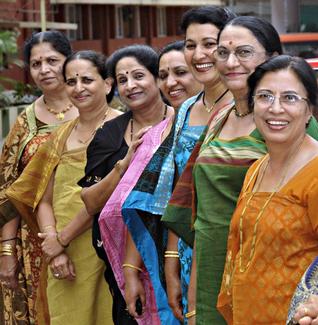
Growing reach: The Kodava Samaja in Vasantnagar is at the centre of efforts to keep the community’s traditions alive. Photo: Bhagya Prakash K. / The Hindu
Almost coinciding with the centenary celebrations of the Bangalore Kodava Samaja last year, the Bureau of Economics and Statistics revealed population figures of Kodavas (Coorgs/Coorgis if you will), immediately giving rise to widespread doomsday theories.
If the statistics are to be believed, in 2011, there were around only 1.25 lakh Kodavas all over the world. Thereafter, stories published in newspapers went as far as to say that by 2030, the entire community would be wiped out.
MISLEADING METHODS?
P.S. Appaiah, retired professor of sociology, who is also penning a book on the history of Kodavas, disputed these claims, questioning the method of collection of figures. “It seems as if members of Kodava Samajas have been counted for the purpose of statistics; but, that excludes children below 18 years of age,” he reasoned. “Similarly, Kodava women, if not men, who have married outside the community, may not have been considered.”
However, he admitted that the numbers were declining. “Post-1950, especially 1975 onwards, the one to two children per family policy became popular. At the same time, many Kodavas started migrating to cities, several of them landing lucrative jobs in public sector units. They also followed the family planning policy more strictly.”
PRIDE IN PRESERVATION
Whether it’s because of these alarming figures being propagated in popular media or simply reverence and pride for their culture — the community is after all celebrated, perhaps stereotypically, for their strong presence in sports, particularly hockey, and the armed forces — many Kodavas, particularly those living away from Kodagu, are particular about keeping their tradition alive.
The Bangalore Kodava Samaja at Vasantnagar, perhaps the most active of the samajas across the country, is at the nucleus of this effort at conservation. In fact, flanked by Thimmaiah Road and Cariappa Road (named after General Thimmaiah and Field Marshal K.M. Cariappa), the area seems to be the centre of Kodava pride.
Early migrants from Kodagu in Bangalore established the Coorg Association in 1911. Beginning with 15 members, the association was renamed as Kodava Samaja as more members were added.
Initially, the samaja is said to have functioned from private houses or public places. In 1959, the maharaja of Mysore Jayachamarajendra Wadiyar donated an acre of land to Field Marshal Kodandera M. Cariappa, who in turn handed it over to the samaja. The Kodava Samaja was registered in 1961.
ENGAGING THE NEXT GENERATION
Sudha Muthanna, from the samaja’s cultural committee, explained the methods engaged in making youngsters part of it. “The training imparted to children in various traditional dance and art forms is done at the level of the sanghas. There are about 35 area-wise sanghas that are actively teaching youngsters traditional art forms such as ummathat and bolkat,” she said.
MORE THAN A CHOULTRY
This is not where the role of the Kodava Samaja ends. From starting out as a wedding choultry, which strictly adheres to the community rules of marriage and its rituals, the samaja has branched out to several other areas.
K.B. Jaya Chinnappa, secretary of the Bangalore samaja listed out the other functions of the organisation, which includes running two educational institutions — Cauvery school and college — under the Kodava Samaja Education Society, a death fund for members, medical and education fund (under which scholarships are given to meritorious children), a proactive sports and recreation club, and a youth wing, among others. For the future, it wants to bring more Kodavas residing in the city under its ambit.
“Of the 40,000-odd Kodavas living in Bangalore, only around 14,000 are members,” Chinnappa said. “We want to ensure that at least 25,000 of them are members of the samaja.
source: http://www.TheHindu.com / Home> News> Cities> Bangalore / By K.C. Deepika / June 27th, 2012

